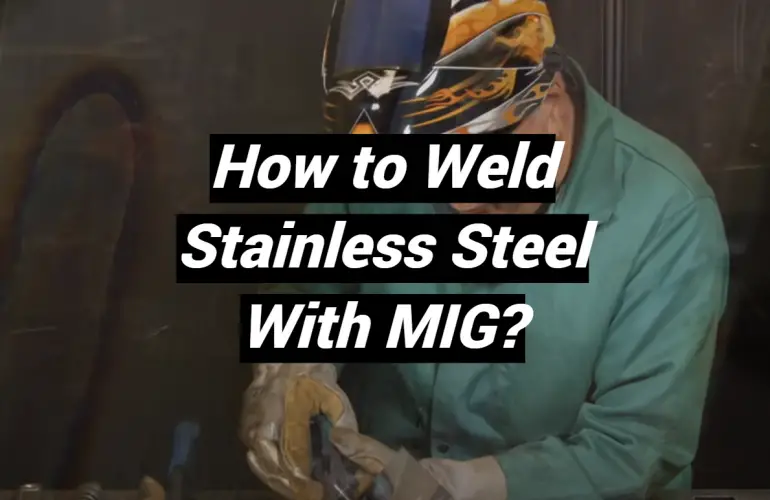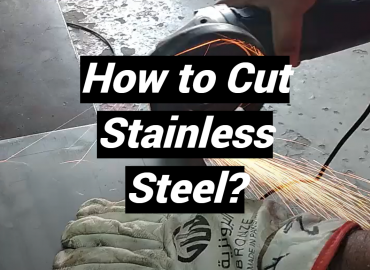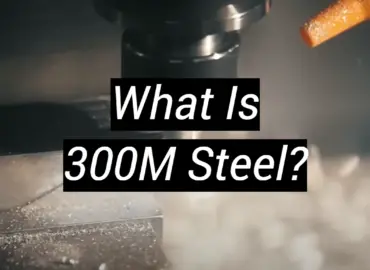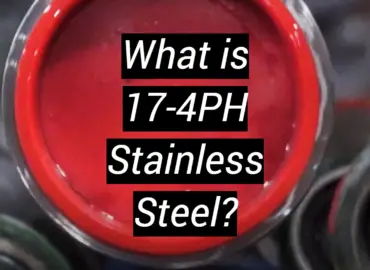Welding stainless steel can be a daunting task. It is a very different process than welding other metals, and it can be tricky to get the hang of it. In this guide, we will walk you through the process of welding stainless steel with MIG. We will discuss the types of stainless steel, the best ways to weld them, and some tips and tricks that will help you become a pro at welding stainless steel!
Factors to Consider During Stainless Steel Welding Using MIG
Selection of an Inert Gas Blend
Inert gas is used in welding to create an atmosphere that is non reactive.
There are several options for the type of gas you can use, including helium, argon, and a mix of both. You will need to experiment to find the right combination for your project as well as taking into account the thickness of the metal you are working with.Use the Right Electrode
The electrode you use is also important when MIG welding stainless steel. In general, you want to use a wire that has a higher level of chromium and nickel. This will help to create a strong weld while also ensuring that the weld is resistant to corrosion. [1]
Set Your Welder to the Right Settings
When welding stainless steel, you need to set your welder to the right settings. This includes setting the amperage and voltage correctly. If you are not sure what settings to use, you can consult your welder’s manual or ask someone at your local welding supply store.
Keep Your Weld Pool Small
It is crucial to maintain a small weld pool when MIG welding stainless steel. Adding this will keep oxides from forming, and it’ll be simpler to manage the weld bead.
Use a Strand of Wire That Is Longer than Usual
If you want to MIG weld stainless steel the right way, use a strand of wire that is longer than what you would usually use.
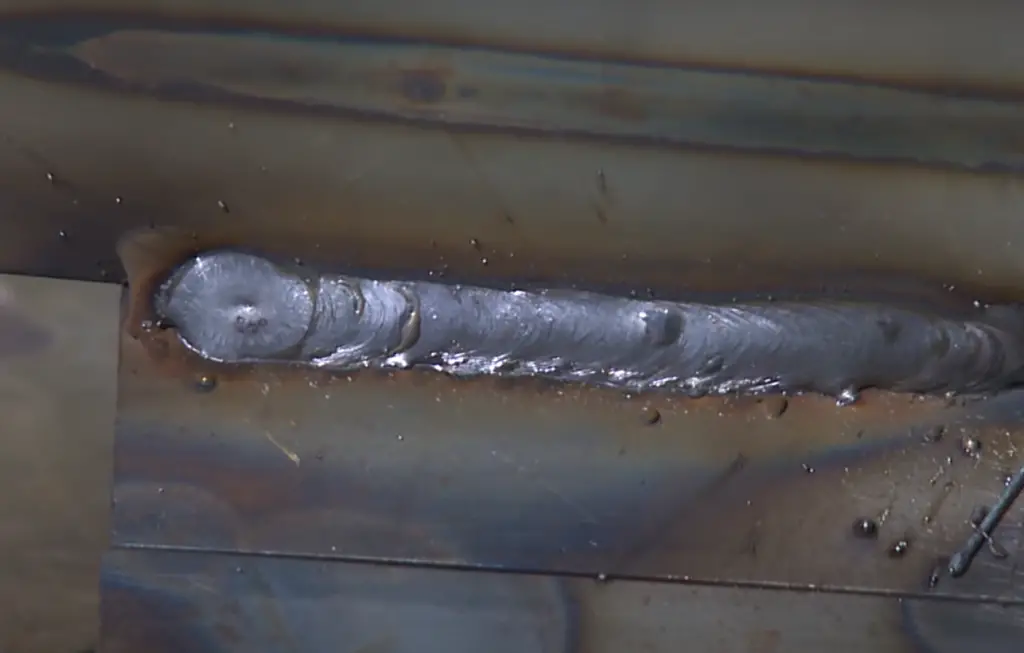
By keeping the weld bead cooler, this will create a stronger overall weld.
Use a Larger Diameter Welding Wire
When MIG welding stainless steel, you should use a larger diameter welding wire. This will help to create a stronger weld and will also help to prevent the formation of oxides.
Use Soap and Water to Clean the Metal Before Welding
Before you begin MIG welding stainless steel, it is important to clean the metal with soap and water. This will remove any impurities that could cause problems during the welding process.
Use a Lower Amperage Setting when First Starting Out
When you are first learning how to MIG weld stainless steel, it is best to use a lower amperage setting. This will help to prevent the formation of oxides and will also make it easier to control the weld bead. As you become more comfortable with the process, you can increase the amperage.
Use a TIG Welder for Best Results
If you want to get the best results when MIG welding stainless steel, you should consider using a TIG welder. This type of welder will allow you to get a cleaner weld and will also provide better control over the weld bead. [2]
Practice on Scrap Metal First
Before you begin MIG welding stainless steel, it is a good idea to practice on some scrap metal first. This will help you get a feel for the process and will also allow you to make any necessary adjustments to your welder’s settings.
How to Weld Stainless Steel Using MIG
Torch Set-up
Before you can begin MIG welding stainless steel, you need to set up your welder properly. This includes setting the gas mixture and voltage correctly.
Clean the Metal
It is essential that you clean the metal before you start welding. Otherwise, the weld will be of poor quality.
Welding Technique
When MIG welding stainless steel, it is important to use the right technique. If you don’t, the weld will be of poor quality and may not even hold together.
Practice Makes Perfect
As with anything else, practice makes perfect when it comes to MIG welding stainless steel. The more you practice, the better you will become at it.
Get Help from a Professional
If you’re having trouble MIG welding stainless steel, it’s a good idea to get some help from a professional. They can show you how to do it properly and make sure that you’re doing it right.
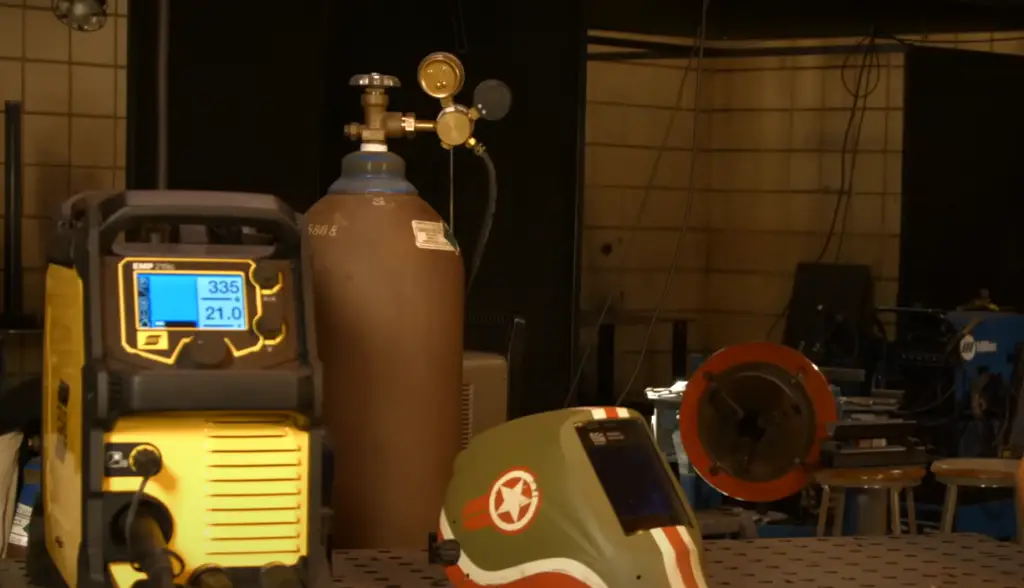
Follow these steps and you’ll be able to MIG weld stainless steel like a pro! [3]
Tips to Get the Best Stainless Steel for MIG Welding
- Go for austenitic steel for MIG welding. This steel is non-magnetic and has high toughness and ductility.
- If you want to weld stainless steel with MIG, you need to use gas that doesn’t contain oxygen or water vapor. The most common gas used for MIG welding stainless steel is argon.
- Use a short arc length when welding stainless steel with MIG. This will prevent the formation of oxide inclusions in the weld metal.
- Use a lower wire feed speed when welding austenitic stainless steel. This will help prevent weld metal overheating and cracking.
- When MIG welding stainless steel, always use a shielding gas that contains at least 2% carbon dioxide. This will help prevent porosity in the weld metal.
- If you’re welding stainless steel that is less than 3mm thick, use a wire diameter that is 0.8mm or less. This will help prevent weld metal overheating and cracking.
- Always use fresh, clean consumables when MIG welding stainless steel. This will help prevent contamination of the weld metal.
- When MIG welding thin gauge stainless steel, it’s important to use a low heat input setting on your welder. This will help prevent warping of the material.
- Use gloves when handling stainless steel during the MIG welding process. This will help prevent skin irritation from contact with the metal.
- After MIG welding stainless steel, it’s important to remove any oxide film that has formed on the surface of the weld. This can be done with a wire brush or grinder.
- Always wear proper safety gear when MIG welding stainless steel. This includes a welding helmet, gloves, and protective clothing.
The Most Common Gas and Electrodes to Use
When MIG welding stainless steel, you need to use the right gas and electrode.
You’ll also want to choose an ER308L stainless steel wire for your electrode.How to Set Your Machine?
When MIG welding stainless steel, you need to make sure your machine is set up properly. First, set the amperage range between 150 and 190. Next, set the wire feed speed between 20 and 30 inches per minute. Finally, set the nozzle angle at 15 degrees.
What are the Necessary Gears for MIG Welding?
MIG welding is a great way to weld stainless steel because it’s easy to learn, relatively inexpensive, and extremely versatile.
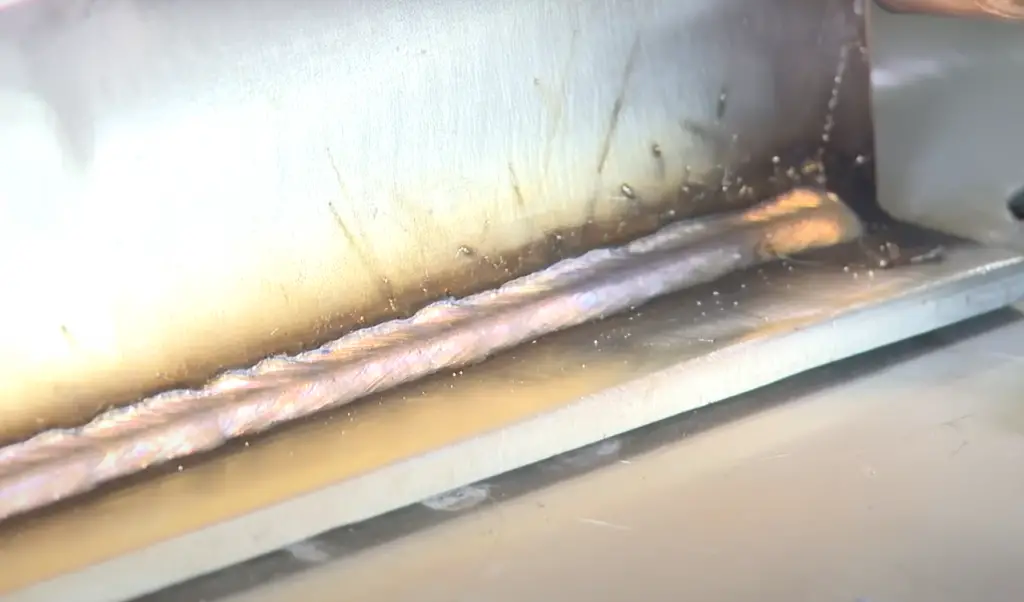
However, there are a few things you need to know before you start MIG welding stainless steel. In this guide, we’ll go over the necessary gear for MIG welding stainless steel, as well as some tips and tricks to help you get the best results possible.
- Welding Machine: When it comes to MIG welding machines, you have a few different options. You can either get a machine that uses alternating current (AC) or direct current (DC). AC machines are usually cheaper and easier to find, but they’re not always the best choice for MIG welding stainless steel. This is because AC machines can cause what’s known as “arc blow,” which can make it difficult to get a clean weld. If you’re going to be MIG welding stainless steel on a regular basis, you might want to invest in a DC machine.
- Welding Wire: The type of welding wire you use is also important. For MIG welding stainless steel, you’ll need to use a wire that is specifically designed for this purpose. You can find these wires at most hardware or welding supply stores.
- Gas Tank: In order to MIG weld, you’ll need a gas tank. The size of the tank will depend on the size of your welding machine and the amount of work you plan on doing. Again, you can find these tanks at most hardware or welding supply stores.
- Helmet: A welding helmet is an absolute necessity when MIG welding. This is because the helmet will protect your face and eyes from the bright light created by the welding process. You can find helmets at most hardware or welding supply stores.
- Gloves: Welding gloves are also a good idea, as they will protect your hands from the heat of the weld. You can find gloves at most hardware or welding supply stores.
- Apron: An apron is not strictly necessary, but it’s a good idea to have one nonetheless. The apron will protect your clothes from sparks and other debris that might be created during the welding process. You can find aprons at most hardware or welding supply stores.
- Boots: Welding boots are another good idea, as they will protect your feet from the heat of the weld. You can find boots at most hardware or welding supply stores.
- Chipping Hammer: A chipping hammer is a tool that you’ll use to remove the slag (the waste material) from your welds. You can find chipping hammers at most hardware or welding supply stores.
- Wire Brush: A wire brush is also useful for removing slag from your welds. You can find wire brushes at most hardware or welding supply stores. [4]
Is Welding Stainless Steel Difficult?
Stainless steel is one of the most common materials used for welding, and it is also one of the most difficult. The high chromium content of stainless steel makes it susceptible to cracking and corrosion, which can make welding it a challenge. But with the right tools and techniques, you can weld stainless steel just like any other type of metal.
One of the biggest challenges when welding stainless steel is preventing contamination. Stainless steel is highly resistant to corrosion, but that resistance can be compromised if the metal is contaminated with iron or carbon. That’s why it’s important to use a welding wire that is specifically designed for stainless steel, and to keep your welding area clean.
Another challenge when welding stainless steel is dealing with expansion and contraction. Stainless steel expands more than other metals when it is heated, and contracts more when it is cooled. This can cause problems with your welds, so it’s important to take expansion and contraction into account when you are welding stainless steel.
Is Welding Stainless Steel Harmful To Your Health?
Welding stainless steel produces harmful fumes that can be dangerous to your health. The fumes produced by welding stainless steel contain chromium, nickel, and other metals that can be harmful if inhaled. That’s why it’s important to weld in a well-ventilated area, and to use a respirator or mask when welding. [5]
What Type Of Welding Machine is Best For Welding Stainless Steel?
MIG welding is the most common type of welding used for welding stainless steel. MIG welding uses a wire that is fed through a hose to the welding gun, and the wire melts and fuses the two pieces of metal together. MIG welding is easy to learn and can be used to weld stainless steel quickly and efficiently.
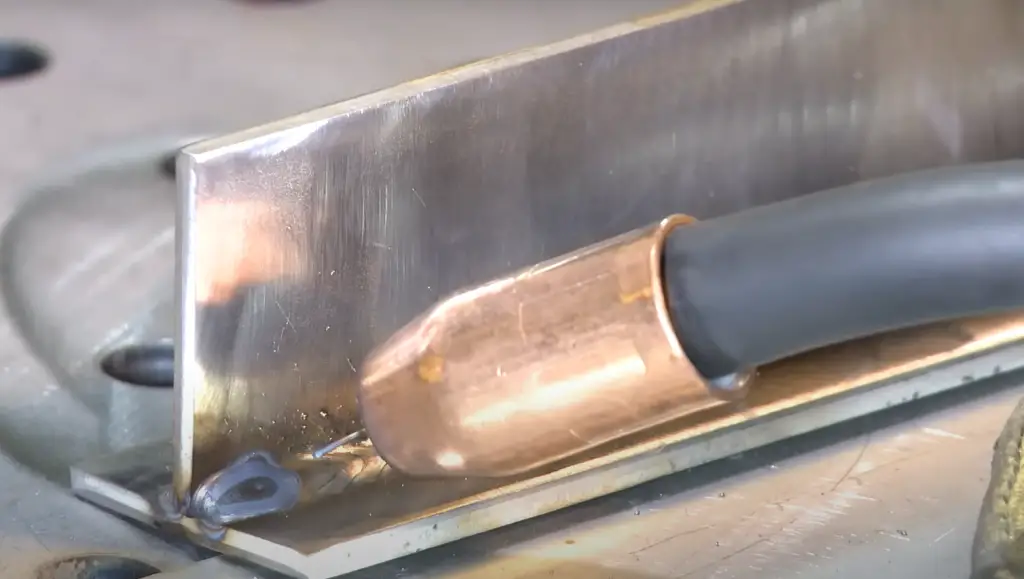
TIG welding is another option for welding stainless steel.
However, TIG welding is more difficult to learn than MIG welding, and it is not as efficient.Stick welding can also be used to weld stainless steel. Stick welding is a type of arc welding, and it uses an electrode that is stuck to the metal to create an arc. Stick welding is more difficult than MIG or TIG welding, but it can be used in situations where other types of welding are not possible.
FAQ
Can you weld stainless steel with regular MIG wire?
Yes, you can weld stainless steel with regular MIG wire. However, there are a few things to keep in mind when doing so. First, stainless steel has a higher risk of welding corrosion than other metals. This means that it is important to use a welding wire that is designed for stainless steel. Second, stainless steel has a higher melting point than other metals. This means that you will need to use a higher welding current when welding stainless steel. Finally, it is important to clean the metal before and after welding to remove any contaminants that could cause corrosion.
What are the benefits of MIG welding stainless steel?
MIG welding offers several benefits when welding stainless steel. First, MIG welding is fast and efficient. This means that you can weld stainless steel in a shorter amount of time than with other welding methods. Second, MIG welding produces a clean weld. This means that there is less of a chance for corrosion to occur. Finally, MIG welding is relatively easy to learn and master. This makes it a great option for those who are new to welding.
What are the disadvantages of MIG welding stainless steel?
Although MIG welding has several advantages, there are some disadvantages to consider as well. First, MIG welding can be more expensive than other welding methods. This is because you need to use special equipment and supplies when MIG welding stainless steel. Second, MIG welding can be difficult to control. This means that it is important to have a lot of experience before attempting to MIG weld stainless steel. Finally, MIG welding can produce harmful fumes. This is why it is important to weld in a well-ventilated area.
What do you need to weld stainless steel with a MIG welder?
If you want to weld stainless steel with a MIG welder, you’ll need to have the right equipment. You’ll need a MIG welder that is capable of welding stainless steel, as well as some stainless steel welding wire. You’ll also need a gas mixture that is specifically designed for welding stainless steel.
What is the correct shielding gas for MIG welding stainless steel?
The correct shielding gas for MIG welding stainless steel is an argon and carbon dioxide mix. This mixture provides the best results when welding stainless steel with a MIG welder.
What is the best wire size for MIG welding stainless steel?
The best wire size for MIG welding stainless steel is 0.035 inches. This size of wire will provide you with the best results when welding stainless steel.
Can I use 75/25 to MIG weld stainless steel?
Yes, you can use 75/25 to MIG weld stainless steel. This gas mixture will provide you with good results when welding stainless steel.
What is the best wire speed for MIG welding stainless steel?
The best wire speed for MIG welding stainless steel is between 18 and 20 inches per minute. This speed will provide you with the best results when welding stainless steel.
Can you MIG stainless with straight argon?
Yes, you can MIG weld stainless steel with straight argon. However, it’s not the most ideal gas to use because it doesn’t have the proper shielding properties to protect the weld pool from contamination.
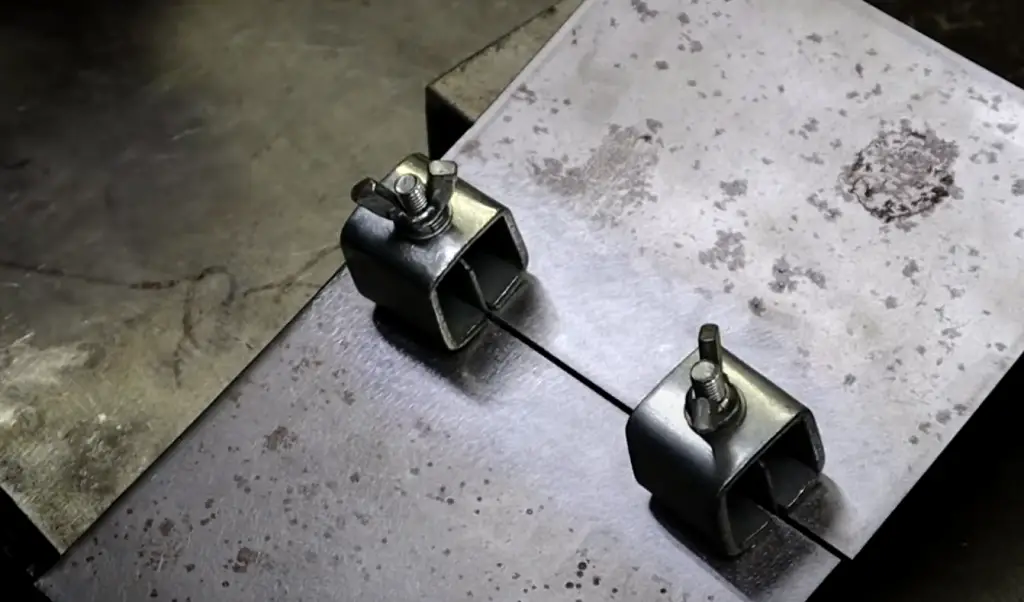
For best results, use a tri-mix gas that contains argon, helium, and carbon dioxide. This gas will provide the necessary shielding while also allowing you to weld at higher speeds.
What is the difference between welding stainless steel and mild steel?
The main difference between welding stainless steel and mild steel is that stainless steel has a higher chromium content. This gives it better corrosion resistance but also makes it more difficult to weld. You’ll need to use a wire feed speed that’s about 20 percent slower than what you would use for mild steel and use a gas that contains argon and carbon dioxide.
Should you push or pull while MIG welding?
When MIG welding, you should always push the electrode because it provides a more stable arc. If you pull the electrode, it’s more likely to break and can cause the weld to be less smooth.
What metals can not be MIG welded?
MIG welding can be used on a variety of metals, including aluminum, brass, copper, and stainless steel. However, it cannot be used on cast iron or magnesium. These metals are too difficult to weld and require special equipment.
What are some alternatives to stainless steel?
When it comes to welding, there are a lot of different materials that can be used. Some of the most common materials include:
- Aluminum
- Cast iron
- Copper
- Magnesium
- Steel
Stainless steel is a popular choice for many reasons. It’s strong, durable, and has a high resistance to rust and corrosion. However, stainless steel can be difficult to weld because it tends to stick to the welding rod and burn through quickly. That’s why it’s important to use the right type of welding rod and technique when welding stainless steel.
Useful Video: How to MIG Weld Stainless Steel to Mild Steel | MIG Monday
Conclusion
When it comes to MIG welding stainless steel, there are a few things you need to keep in mind. Use the right gas, have the correct shielding in place, use short arc welding techniques and weld at a slow speed. With these tips in mind, you should be able to get great results when MIG welding stainless steel.
References:
- https://waterwelders.com/how-to-mig-weld-stainless-steel/
- https://www.millerwelds.com/resources/article-library/want-to-improve-results-when-mig-welding-stainless-steel
- https://www.r-techwelding.co.uk/welding-stainless-steel
- https://become-a-welder.com/beginner-mig-welding-gear/
- https://www.hse.gov.uk/research/rrpdf/rr770.pdf

